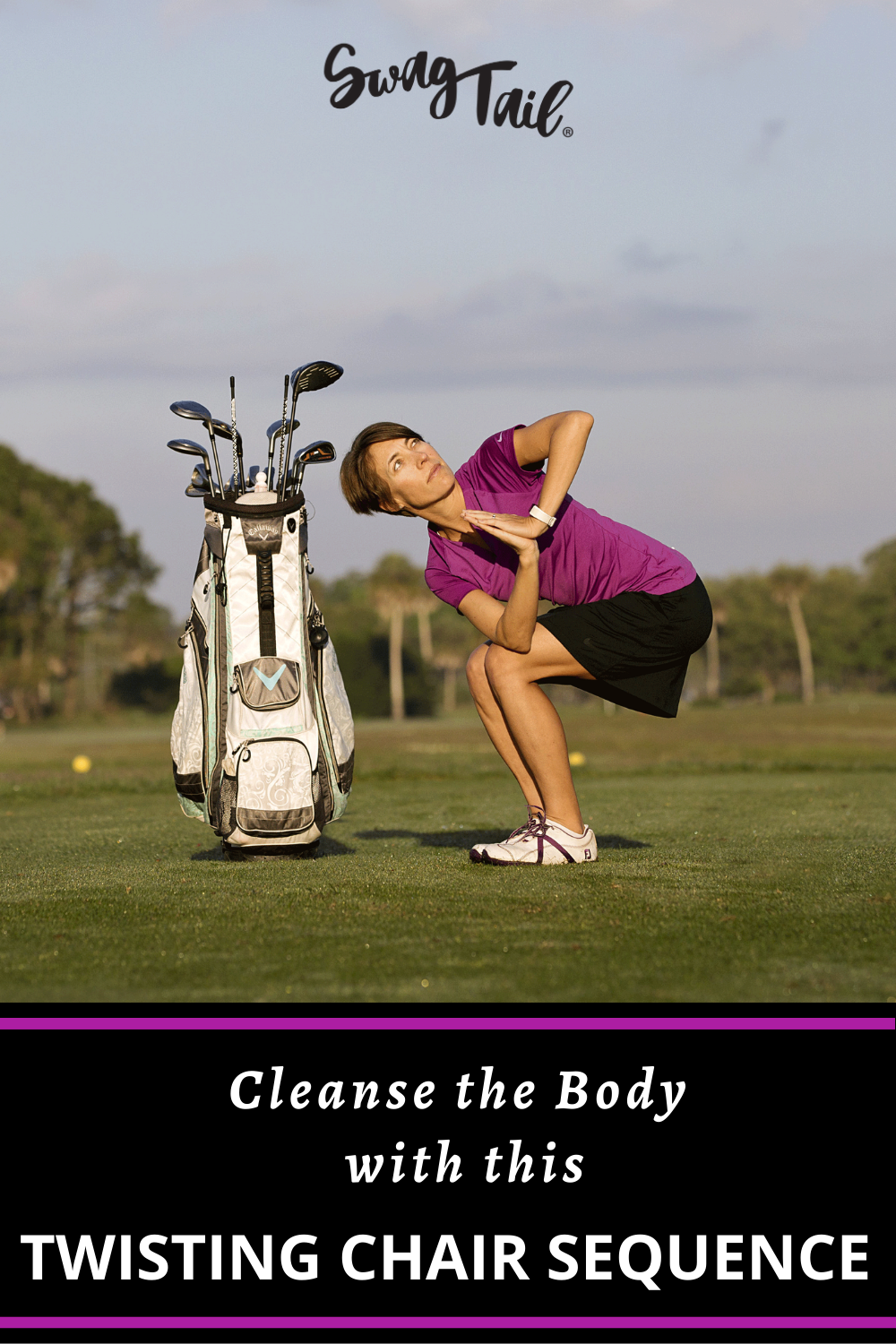 Happy New Year!! It’s the start of a fresh new chunk of time in which you can be, do, or have anything. You get to begin anew. Whether you’re reading this on January 1st, or midway through the year, the moment to shift gears is available to you now. To do this, you must let go of the past and make space for the amazing future to come. This twisting chair yoga sequence gives you the power to do exactly that!
Happy New Year!! It’s the start of a fresh new chunk of time in which you can be, do, or have anything. You get to begin anew. Whether you’re reading this on January 1st, or midway through the year, the moment to shift gears is available to you now. To do this, you must let go of the past and make space for the amazing future to come. This twisting chair yoga sequence gives you the power to do exactly that!
I’ve already had this lesson front-and-center in my life just under a week into this new year.
It all started when Steve watched a recent webinar about healing his leaky gut. He’s been in so much pain lately that he’s willing to try anything to feel better. This led to the purchase of The Plant Paradox book and me reading up on what these dietary changes require.
Let’s just say that my beliefs about “eating healthy” have been entirely uprooted. Many of the foods I love and thought were good for me are now scientifically proven to harm the intestinal biome.
The challenge: Let go of my outdated perspective of the world. Learn how to cook in new ways. Give up old habits that are no longer serving me (or Steve).
After a week of this shift, I feel even more energized than I did before (which Steve thought was impossible). And even he has more regularity in the bathroom and vitality during the day. That being said, I’ve also paired our new eating style with this twisting chair sequence to cleanse the body. Yet no matter what changes you’re looking to adopt in the future, this class will create the space for those desires to manifest.
Photo Credit: Ember and Earth Photography
THE ELEMENTS OF REVOLVED UTKATASANA
Twisting chair pose, or revolved chair pose, is known as Parivrtta Utkatasana in Sanskirt. These terms break down in the following ways:
- Parivrtta = revolved
- Utkata = powerful, fierce
- Asana = pose
And this postures is powerful for a reason!
The lower half of the body requires strength. The hips are flexed in order to sink your seat low (just like you’re about to sit into a chair). Only, there is no relief beneath your cheeks. The glutes and hamstrings must lengthen and be stable at the same time to prevent you from falling down. Plus the quadriceps and feet must also activate (and fight gravity) to keep you in this posture.
Then, you have the upper body also at work. The spine elongates from your stable hips and you need a strong core all around the spine to make this happen. Your thoracic spine begins to rotate as you twist. And the supporting muscles of the shoulder complex aid in your ability to twist even deeper into the pose.
Suggested Props:
This twisting chair sequence only requires one block by your side. However, if you have two blocks, they can work as a pair to make the low lunges easier throughout class.
(1) SAVASANA
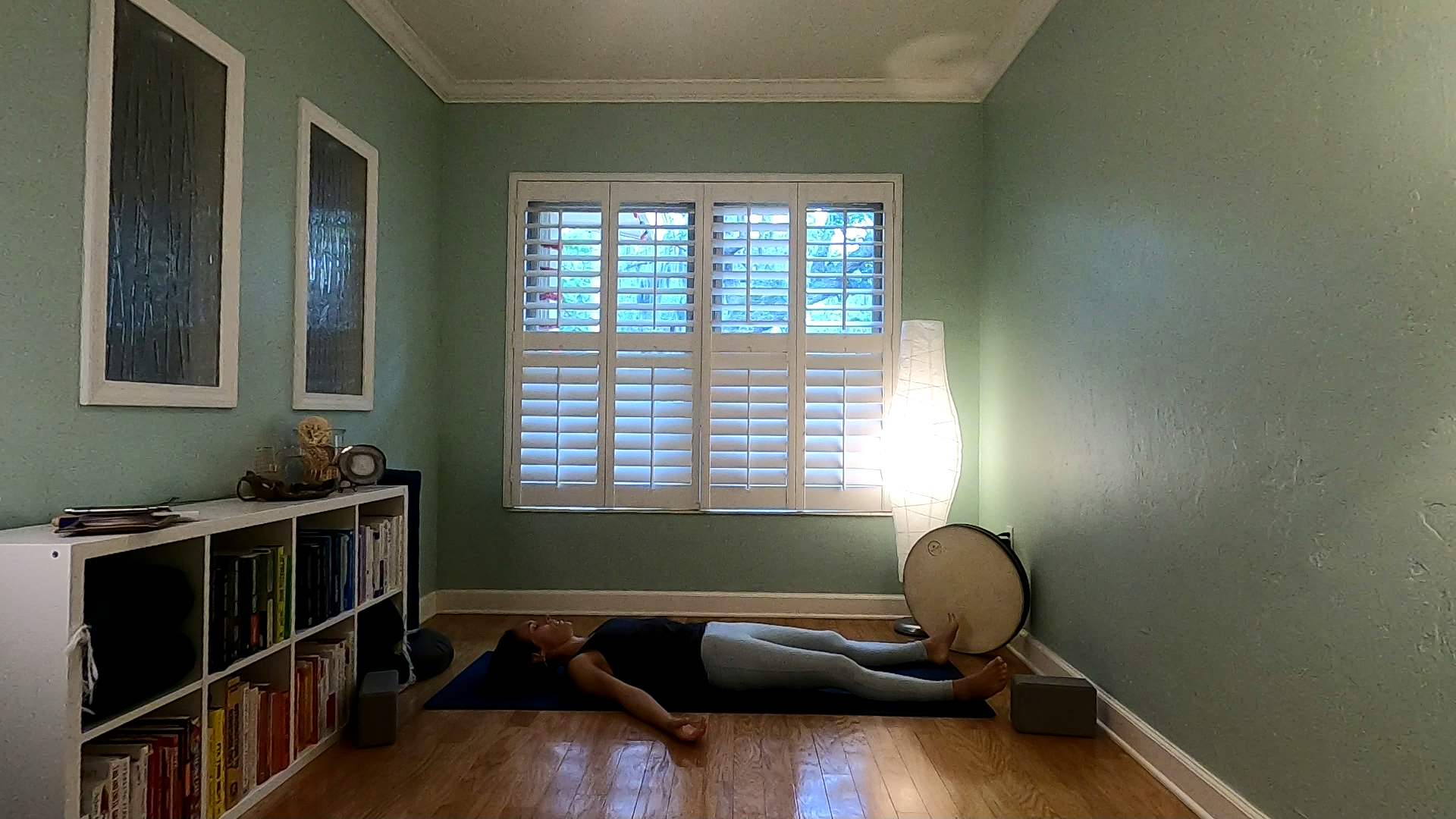 Purpose: Use this stillness-based posture to segue from the events of your day to your yoga practice.
Purpose: Use this stillness-based posture to segue from the events of your day to your yoga practice.
Length: 3-5 minutes
Additional Notes:
- Since this class will strengthen the outer hips, you could also have students start in constructive rest, with their feet on the floor. Then, you could encourage them to be aware of this space and how they will use it later in revolved utkatasana.
(2) SUPINE LATERAL BEND
Purpose: In order for the spine to rotate in this twisting chair sequence, you want to elongate the vertebrae first. That’s what this supine lateral bend does. It creates space between the ribs and in the lats. Doing so on the floor gives you more time to ease into your practice as well.
Length: 5-10 rounds of breath per side
Additional Notes:
- Arms can be in any position (out to the side, in a cactus position, or behind the head)
- When opening the right side of the body, you can amplify the stretch by crossing the right foot over the left. Then, reverse that (left over right) when stretching the left side)
(3) TWISTING CORE WORK + HOLD TWIST
Purpose: Revolved Utkatasana is a powerful pose for a reason. It requires great abdominal strength and the core work here prepares the body for the work to come later in the sequence.
Length: Take the active version of the core twist 2-3 minutes, then hold a passive twist on each side for 5-10 breaths.
Additional Notes:
- You can omit the twisting and simply keep the knees over the hips (shins parallel to the floor) to greatly engage the core.
- Keep the shoulders, neck, and face relaxed as much as possible.
- As the knees drop to the right, twist the belly button toward the left. This is reversed when twisting to the second side.
Counterpose: Hug the knees into the chest, rock front to back, and then make your way to uttanasana. Notice the effects of the mind inversion to focus the mind before moving back into more active postures. Then, when ready, step back to plank and drop down into table top.
(4) SHOULDER BLADE PUSH-UPS
 Purpose: Shoulder mobility (which is flexibility with control) allows you to deepen your experience in revolved utkatasana. Shoulder blade push ups help you build the muscle memory in a more symmetrical way first. Then, you can protract and retract the scapula independently when twisting later.
Purpose: Shoulder mobility (which is flexibility with control) allows you to deepen your experience in revolved utkatasana. Shoulder blade push ups help you build the muscle memory in a more symmetrical way first. Then, you can protract and retract the scapula independently when twisting later.
Length: 5-7 rounds
Additional Notes:
- You can use cat/cow to warm up the spine before or after the push-ups
- Keep the low back level and just move the scapula when doing the shoulder blade push-ups. Basically, the core will be slightly engaged to keep the spine in this neutral position
(5) WALKING DOWN DOG
Purpose: Adho Mukha Svanasana, also known as Down Dog, is a full-body experience. You’ll build heat in the shoulders, core, and legs simultaneously. Then, when you add the walking element, it lubricates the hips and activities the glutes in preparation for twisting chair pose.
Length: 1-2 minutes of movements
Additional Notes:
- Hold down dog before and/or after you walk your dog
- Students can lift their legs as high as comfortable while keeping the legs straight
- Keep the ears in line with the arms and keep pushing the floor away with the hands. The goal is to warm up the shoulders here, not burn them out.
(6) THREAD THE NEEDLE
Purpose: You just built heat in a walking down dog. Now, it’s time to rest and stretch the shoulders in thread the needle pose. Again, this pose encourages protraction and retraction of the shoulder blades and prepares you for the deeper aspect of these movements needed for revolved chair pose. Plus it further elongates the spine to make that rotation possible.
Length: 5-10 breathes each side
Additional Notes: Use the block or a blanket to bring the floor up to you (if it’s a stretch to get the back of the shoulder to the ground).
Counterpose: Return to Down Dog and then walk to the front of the mat to prepare for the standing poses.
(7) UTKATASANA = CHAIR POSE
 Purpose: Getting the straightforward version of chair pose prepares the lower body for the work to come. Build heat in the legs and engage the lats to lift the arms. And, get your mind in the dedicated state necessary to hold such a challenging posture.
Purpose: Getting the straightforward version of chair pose prepares the lower body for the work to come. Build heat in the legs and engage the lats to lift the arms. And, get your mind in the dedicated state necessary to hold such a challenging posture.
Length: 5-10 rounds of breathing.
Additional Notes:
- Keep the hands at the heart or hips to take shoulder tension out of the equation.
(8) SURYA NAMASKARA C (WITH TWISTS)
Purpose: Surya Namasakara C is another way to warm up the entire body all at once. Plus, the lunges in the sequence lengthen the quadriceps and eccentrically contract the hamstrings. Hint: those are both needed for revolved chair pose later. The images you see here incorporate a low lunge twist from anjaneyasana during Sun Salutation C. Check out the video to watch how I teach it in this format.
Length: 3 rounds total
Additional Notes:
- Take the first round slower to memorize the body movements.
- Move through the second round fluidly, matching movement to breath.
- Then, on the third round, add a low lunge twist.
- If you have more time in class, you can also add 1-2 more rounds of this twisted option in a fluid manner to further ingrain these movements into the body’s memory.
(9) WARRIOR 1 FLOW
Purpose: Two two main poses in this flow are warrior 1 and humble warrior. This is because both postures keep the hips drawing toward the midline and build more heat. Yes, this is necessary for a stable base in a twisting chair pose, too.
Length:
- For a flow-style class, move through a vinyasa and get to down dog. Then, step forward to take the two warrior poses.
- If you’re teaching a hatha or Iyengar style class, you can simply step back into warrior one.
Additional Notes:
- Add a bind behind the back to retract the shoulder blades and open the heart.
- End this portion of the twisting chair sequence at the front of the mat. You can then turn to the side to prepare for Prasarita T up next.
(10) TWISTING PRASARITA
Purpose: One goal of a yoga practice is to generate balance in the body. With all of the outer hip work done thus far, it’s time to create length on the inner hip now. And, while this is happening, you can (once again) practice rotating the spine and mobilizing the shoulder blades in this twist.
Length: Hold 5-10 breathes on each side of the twist
Additional Notes:
- Place a block under the bottom hand to make the pose easier.
- Take a few cycles of breath in a symmetrical forward fold before moving on.
For more heat …
and further build strength in the lower body, you can add a few twisting movements in horse stance after your forward fold. See the images below.
(11) VINYASA TO YOUR BELLY
Purpose: Give your feet a rest and fire up the back line of the body in this prone position. Take a few rounds of breath here before moving on to the next pose.
(12) COBRA
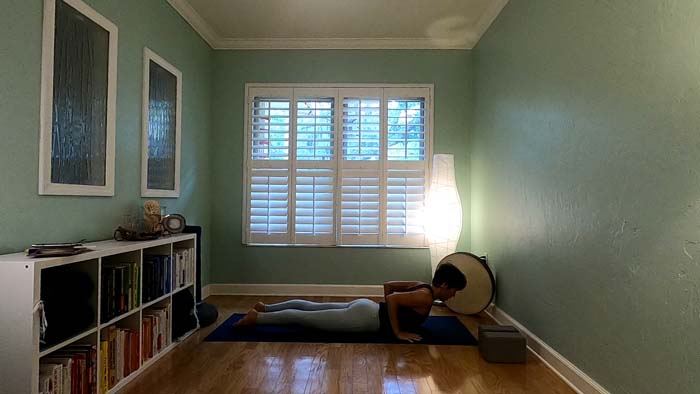 Purpose: The hamstrings eccentrically contract in utkatasana. Plus, the erector spinae must engage to hold the torso upright. Taking a few rounds of cobra pose help warm up these areas here.
Purpose: The hamstrings eccentrically contract in utkatasana. Plus, the erector spinae must engage to hold the torso upright. Taking a few rounds of cobra pose help warm up these areas here.
Length: 2-3 rounds (5-7 breath cycles each round)
Additional Notes:
- You can also add a third round of shalabhasana to make this muscle memory even more pronounced.
(13) TWISTING CHAIR (MAIN POSE)
Purpose: The time has come in this twisting chair sequence for the main pose. Yes, you’re more than ready to take revolved utkatasana now. By making this pose the star of your class, you remind your body and your students just how complex this pose is. And you refine your posture within it as you build strength, flexibility, and mental focus.
Length: 5-10 breathes each side. If you have time, perhaps take a second round on each side.
Additional Notes:
- Keep the torso more upright, and reach the arms out parallel to the floor, to make the pose more accessible.
- Before you twist, take the hands to the heart and broaden the collarbones.This is a reminder to keep the chest open even when twisting.
Counterpose: You can fold forward into Uttanasana for a few rounds of breath to stretch the hamstrings. Then, simply come to a seat or take a vinyasa before doing so. We’ll meet in Dandasana next.
(14) JANU SIRSASANA
Purpose: This pose elongates the hamstrings and low back. Plus it opens the hips and starts to calm the body and mind after so much active work in this sequence.
Length: Hold each side about 1 minute. Pause in Dandasana before and after each side.
Additional Notes:
- Keep the spine as long as possible in the pose.
- Use a strap if the foot is inaccessible.
- Place a block under the bent knee if the knee does not touch the floor.
(15) UPAVISTA KONASANA
Purpose: Use this symmetrical pose to open up the inner hamstrings and groin evenly. The gracilis and adductors are used heavily in chair pose to keep the knees tracking in the right place. Now, you can release those areas in this wide-legged forward fold.
Length: Hold 2-3 minutes
Counterpose: Come to lie on your back in savasana. Make sure your block is nearby for the next pose, too.
(16) APANASANA WITH A BLOCK
Purpose: Set the feet up like you’re ready for bridge pose, and place the block behind the back of the pelvis (lowest or middle levels). Students can stay here for a mild inversion, or take apanasana from this position. Apanasana is known as wind-relieving pose. Only when you’re in this slight backbend, it amplifies the stretch to the hip flexors. This is much-welcomed after the strength needed for chair pose earlier.
Length: Hold 1-2 minutes each side.
Additional Notes:
- Stay in supported bridge pose for the easiest way to restore length to the quads and get a symmetrical stretch..
- Keep the bottom leg in bridge position while hugging the other knee to the chest (slightly more challenging still).
- To intensify the stretch, extend the leg not currently held toward the torso.
(17) SUPPORTED BRIDGE OR SHOULDER STAND
Purpose: Keep the calming effects of this practice going with a mild, supportive inversion. This can be done in a supported bridge or supported shoulderstand. In either case, this offsets the active work of this twisting chair sequence with a more passive, restorative ending.
Length: 2-4 minutes
Additional Notes:
- If you took the shoulder stand variation, return to the supported bridge for a few rounds of breath before removing the block.
- Lie in savasana to be aware of the effects of the practice before taking your final movements.
(18) HAPPY BABY
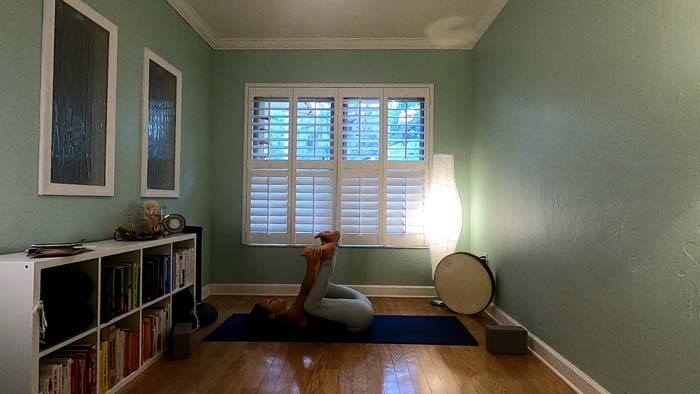 Purpose: Happy baby is a wonderful, symmetrical pose that releases any remaining tension in the low back and hips. That;s why it’s great to put it here just before final relaxation. However, listen to your body’s needs and do what’s best for you.
Purpose: Happy baby is a wonderful, symmetrical pose that releases any remaining tension in the low back and hips. That;s why it’s great to put it here just before final relaxation. However, listen to your body’s needs and do what’s best for you.
Length: 1 minute
Additional Notes:
- Roll around to massage the spine one last time.
- Extend one or both legs at a time for one final hamstring stretch, too.
- Make sure to smile like the happy baby that you are–eager for the space you’ve created through this twisting sequence.
(19) SAVASANA
Purpose: It’s time to take rest and absorb the changes from your practice. Basically, this time in stillness trains the mind, too. You move from analytical thinking into more feeling throughout your practice. This shifts you from beta to alpha brain wave activity. And, in this more receptive state, you can align with the changes you seek for your future.
Length: 5-7 minutes
PUTTING IT TOGETHER
Revolved utkatasana is a powerful pose that requires a strong legs, stable hips, and a mobile spine. This twisting chair yoga sequence prepares the body for such work. The end result is more space in the tissue, efficiency in body communication, and clarity in the mind. These factors combine to release old patterns and make way for your better future.
Take Action Now:
- Download the sequence above now and use it in your classes this week.
- Join me on YouTube to take this class with me, first!
- Make notes of where you want more space in your body (or your life) and what you want to fill that space in the year to come. Hint: These can become the intentions you set for your future.


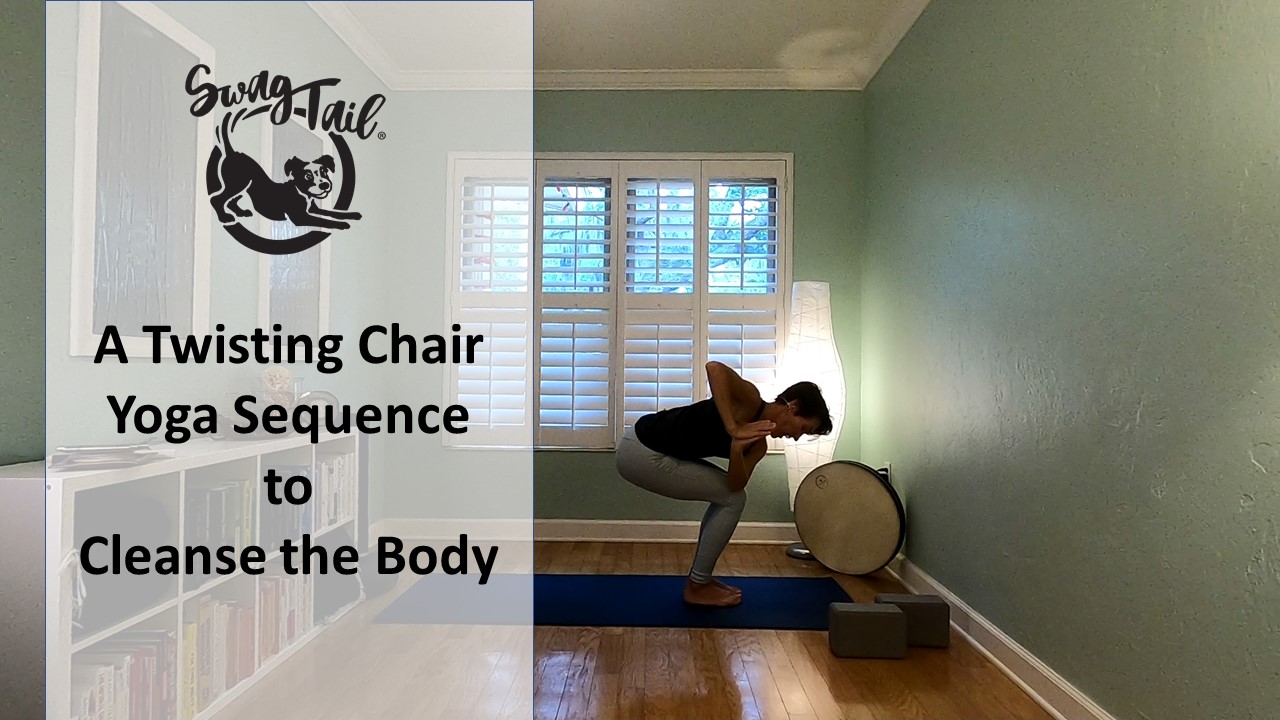
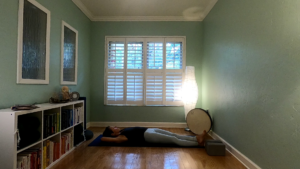
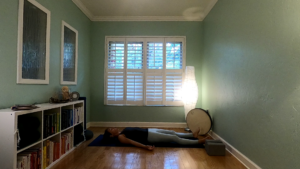
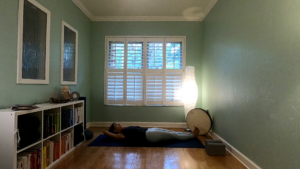
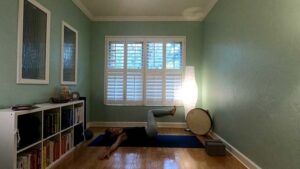
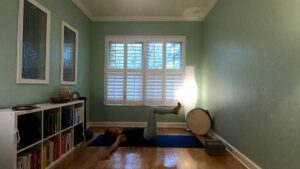


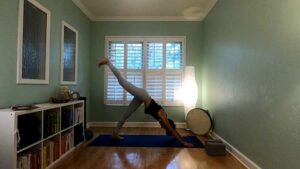
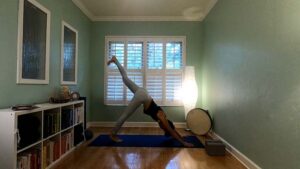
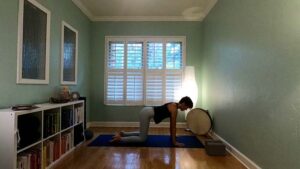
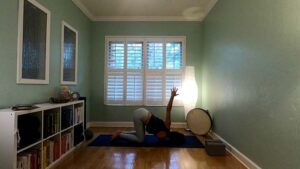
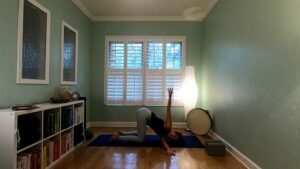
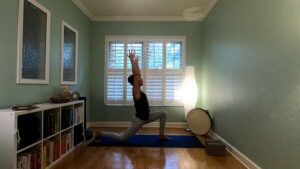
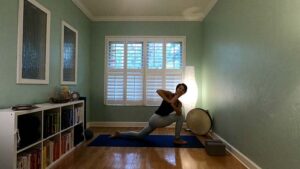
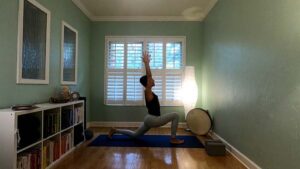
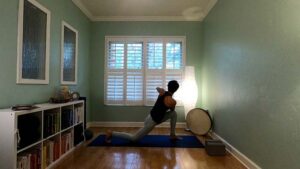
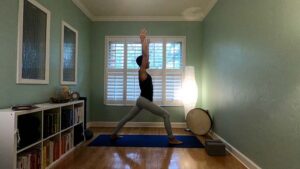
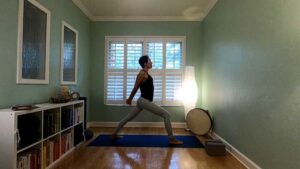
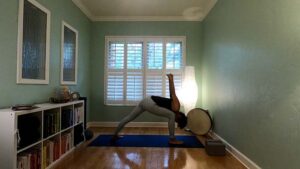
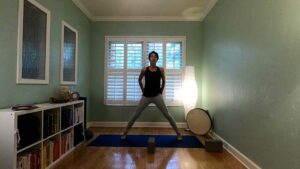
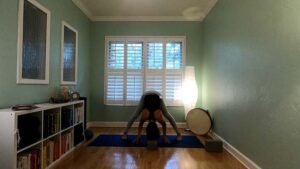
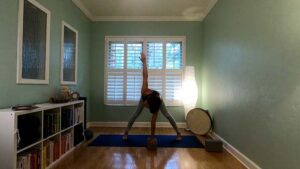
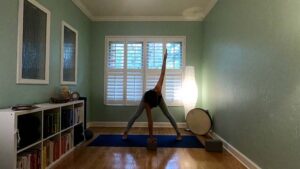
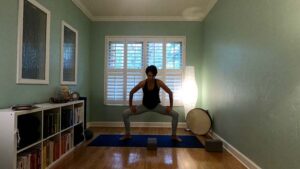
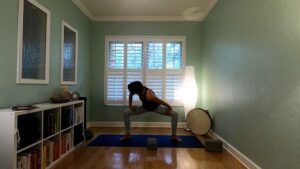
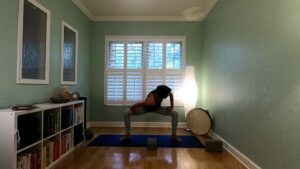
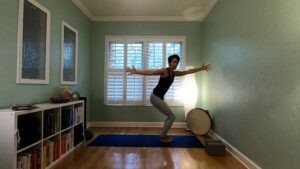
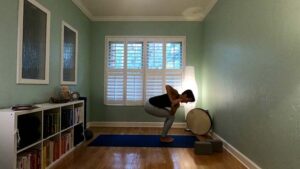
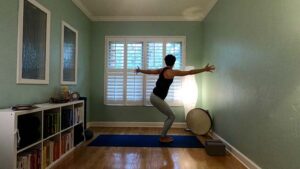
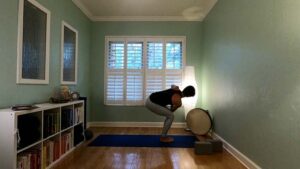
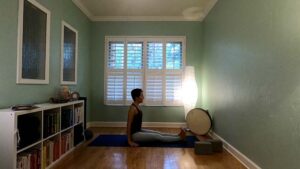
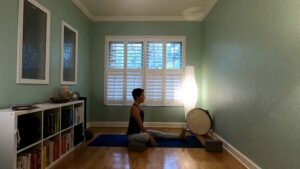
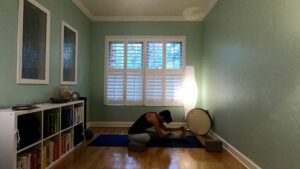

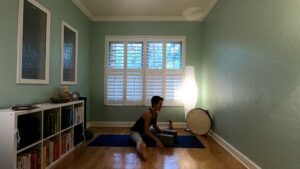
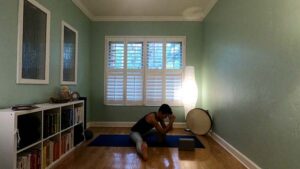
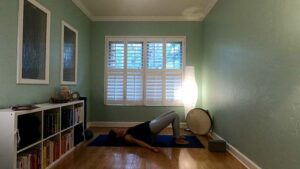
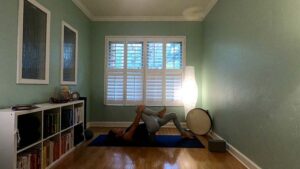
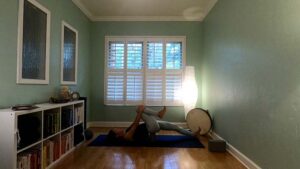
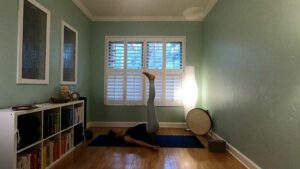


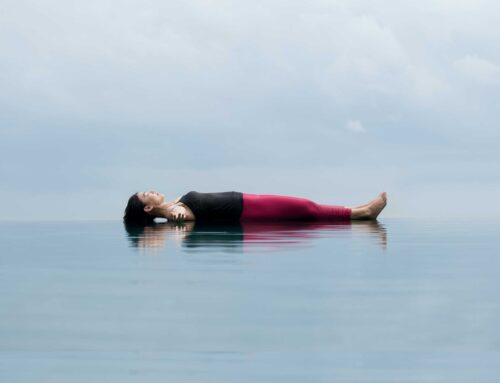
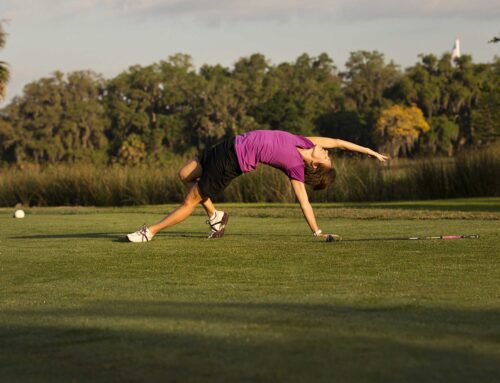

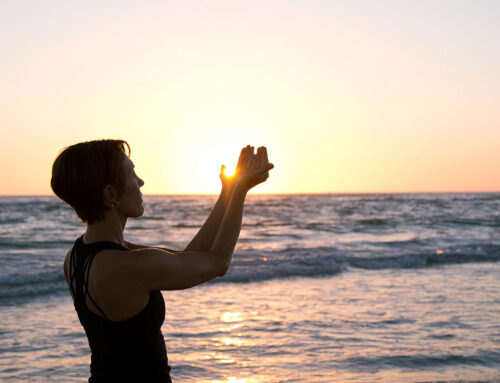
Leave A Comment